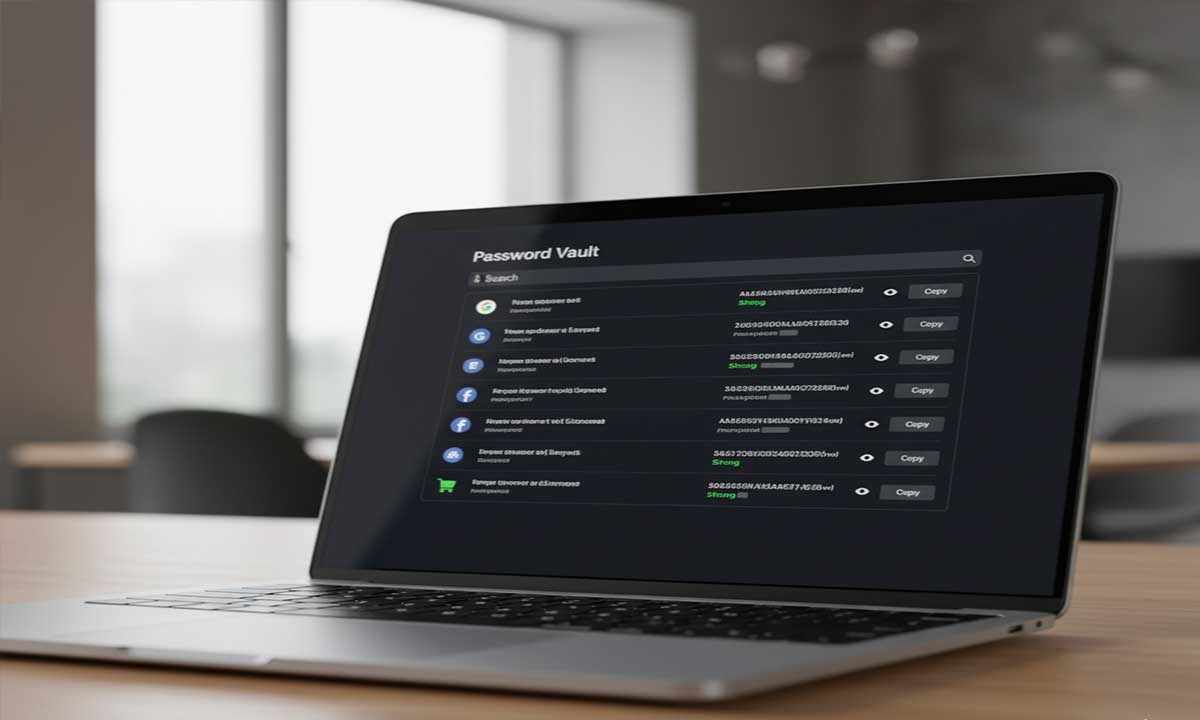Securing Your Workspace with Password Tools
Strengthening Digital Workspace Security Through Smart Password Practices
Modern professional life depends heavily on online systems. Documents, communication channels, financial platforms, and creative assets now live in digital environments. Because of this shift, protecting online access is no longer optional. It sits at the core of professional credibility, business continuity, and personal trust, much like the digital marketing’s importance.
Every login represents a door. Each email account, cloud drive, or payment portal holds information that can affect reputations and livelihoods. Keeping those doors secure requires careful attention, practical tools, and disciplined habits that work across borders and industries.
Quick overview of this article
This article explains how password tools support digital security in professional and personal settings.
It discusses password managers, password generators, and two-factor authentication, along with daily habits that reduce risk and support global data protection standards.
Why Password Tools Matter in Modern Digital Work
Password tools are applications, systems, or devices designed to help people create, store, and protect login credentials. Their value grows as digital services expand worldwide. Email platforms, collaboration tools, banking systems, government portals, and professional networks all require secure access, similar to the protocols for securing remote work.
Managing dozens, or even hundreds, of accounts creates real challenges. Many users struggle to remember complex credentials. As a result, weak or repeated passwords become common. This habit exposes accounts to serious risk.
Once a single password is compromised, attackers often attempt the same credentials across other platforms. This chain reaction can lead to data loss, identity misuse, financial damage, and long-term reputational harm. Reports of large-scale data breaches appear almost daily, and weak password practices often play a central role.
Password tools address these risks by reducing human error. They allow individuals and organizations to maintain strong access controls without relying on memory alone. In global business environments, where teams work remotely across regions and time zones, these tools support both security and operational stability.
Selecting the Right Tools for Digital Protection
Password-related tools serve different purposes. Choosing the right combination depends on work style, data sensitivity, and compliance requirements. Together, they form a layered approach that strengthens digital defenses.
Password Managers
Password managers store login details in an encrypted vault secured by a single master password. This approach removes the need to remember every credential while ensuring each account uses a strong and unique password.
In practice, a password manager fills in login details automatically on verified websites. This reduces exposure to fake login pages and email-based scams. For professionals who access many platforms daily, this automation saves time while lowering risk.
Advanced password managers also offer alerts when credentials appear in known data leaks. Some provide built-in tools for updating compromised passwords quickly. These features support long-term security without disrupting daily workflows.
Across global organizations, password managers help standardize access practices. They reduce reliance on shared passwords and support safer collaboration across departments and regions.
Password Generators
Password generators create random strings that include letters, numbers, and symbols. These passwords avoid personal references and predictable patterns, making them difficult to guess or break through automated attacks.
Human-created passwords often follow familiar formats. Names, dates, or repeated characters may feel convenient but weaken security. Generated passwords remove this vulnerability by relying on randomness rather than memory.
Using a generator when creating new accounts or updating old credentials strengthens security from the start. When paired with a password manager, users never need to memorize these complex strings, allowing security and usability to coexist.
Two-Factor Authentication Tools
Two-factor authentication adds an extra verification step beyond a username and password. This second factor confirms identity through something the user has or receives.
Common methods include one-time codes sent to mobile devices, time-based codes generated by authentication apps, or physical security keys. Even if a password becomes known to an attacker, access remains blocked without the second factor.
For accounts containing sensitive data, such as email, financial records, or client information, two-factor authentication provides essential protection. Many global compliance standards now recommend or require its use.
Developing Strong Password Management Habits
Tools alone do not guarantee safety. Daily habits play an equally important role. Consistent practices reduce exposure to threats and support long-term digital health.
Regular Password Updates
Passwords should change periodically, especially for high-risk accounts. Regular updates reduce the amount of time an exposed password remains useful to attackers. This practice limits damage even if credentials are unknowingly compromised.
Unique Credentials for Every Account
Reusing passwords remains one of the most common security mistakes worldwide. When one service suffers a breach, reused credentials open access to unrelated platforms. Using unique passwords for each account prevents this chain effect.
Password managers simplify this process by handling storage and recall, removing the temptation to reuse credentials.
Recognizing Fraudulent Messages and Sites
Deceptive emails and fake websites often imitate trusted services. These messages aim to collect login information through urgency or fear. Careful inspection of website addresses and email senders helps reduce risk, particularly when considering practices for secure email communications.
Password managers often refuse to auto-fill credentials on unrecognized domains. This behavior acts as a warning sign and adds another layer of defense.
Encouraging Security Awareness in Teams
In professional environments, security depends on shared responsibility. Regular training and clear policies help team members understand their role in protecting data.
Organizations that prioritize security education reduce accidental exposure and support a stronger overall defense. This approach benefits employees, partners, and clients alike.
How Strong Password Security Supports Trust and Stability
Reliable digital security creates benefits that extend beyond technical protection. It supports trust, continuity, and long-term success.
Building Confidence with Clients and Partners
Clients expect their information to remain private. Businesses that protect data demonstrate respect and professionalism. A single security incident can undo years of relationship building.
Strong password practices signal reliability. They reassure clients and partners that shared information remains safe, supporting long-term collaboration and growth.
Safeguarding Intellectual Property
Organizations often store valuable research, designs, strategies, and internal communications online. Unauthorized access to this information can cause competitive harm or financial loss.
Password tools protect these assets by limiting access to authorized users only. This protection supports innovation and preserves strategic advantage in global markets.
Reducing Stress for Individuals and Independent Professionals
For individuals, secure accounts provide peace of mind. Concerns about identity misuse or financial fraud can distract from work and personal life.
Entrepreneurs and freelancers benefit greatly from reliable security. Knowing that systems are protected allows them to focus on creativity, service delivery, and professional development.
Meeting International Data Protection Standards
Many regions enforce strict data protection laws. Regulations such as Europe’s GDPR and similar frameworks worldwide require organizations to protect personal information responsibly.
Strong password management supports compliance by limiting unauthorized access. Failure to meet these standards can result in legal penalties and financial consequences. Proactive security practices help organizations operate confidently across borders.
Addressing Ongoing Security Challenges
Digital threats continue to change. Attack methods grow more complex, requiring constant attention and adaptation. Staying informed about the evolving cybersecurity landscape is crucial for professionals and organizations alike.
Adapting to Changing Threat Patterns
Cyber threats do not remain static. Attackers adjust techniques as defenses improve. This reality requires regular updates to security tools and awareness of emerging risks.
Password tool providers release updates to address new vulnerabilities. Keeping software current remains essential for effective protection.
Staying Informed Through Education and Updates
Security awareness evolves alongside technology. Learning about new risks and safe practices empowers users to make better decisions. For instance, knowing how to use a live password generator ensures foundational safety and unique credentials.
Regular software updates, combined with ongoing education, form a strong foundation for long-term digital safety.
Choosing Preventive Action Over Damage Control
Preventive security measures reduce long-term cost and disruption. Addressing weaknesses early avoids emergency responses after incidents occur.
Routine reviews of password practices, tool usage, and access permissions help maintain resilience. Proactive action protects time, resources, and professional reputation.
Moving Forward with Confidence in Digital Spaces
Securing digital workspaces requires thoughtful choices and consistent habits. Password tools support this effort by reducing risk and simplifying secure access.
As digital systems continue to shape professional and personal life worldwide, careful attention to access security remains one of the most practical investments anyone can make. Password managers, generators, and multi-step verification methods work together to protect information, support trust, and enable productive digital experiences across global environments.










